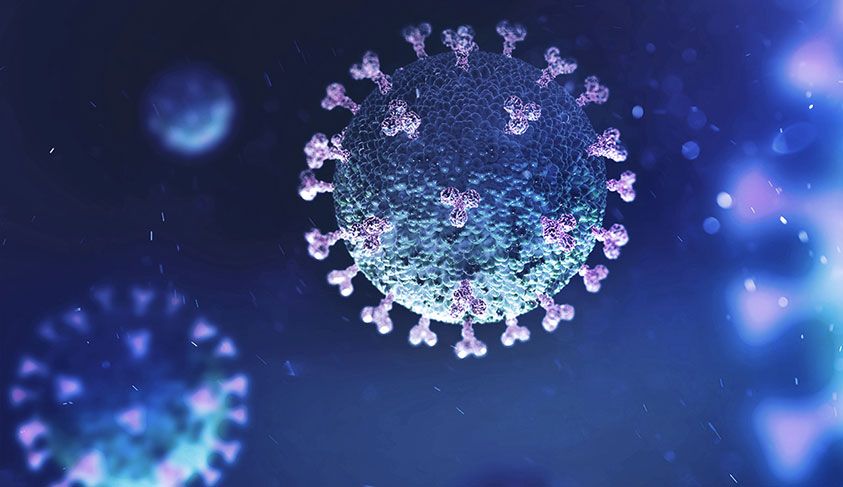치과 업계에서는 감염관리와 안전성이 중요합니다. 그리고 코로나19 사태로 인해 감염관리와 안전이 더욱 중요해졌습니다. 디지털 임프레션과 아날로그 임프레션 방식의 감염관리 및 안전 측면을 다룬 독립적인 연구에서는 어떠한 결론이 도출되었을까요?
아래를 읽어보고 4가지의 중요 사항에 대해 알아보세요.

1. 아날로그 임프레션 방식에서는 재료 관리와 기공소로 운송과 같은 단계가 워크플로에 추가됩니다.
아날로그 임프레션 방식을 사용하면 트레이, 왁스, 인상재 및 관련 장치를 포함한 다양한 물품을 다루어야 합니다. 디지털 임프레션 방식을 사용하면 이러한 관리 요소가 필요하지 않습니다1.
기공소로 배송되는 기존의 임프레션/캐스트는 운송 과정이 필요하며, 이 운송 과정에서 교차 감염의 위험을 증가시키고2,3 습도가 높은 환경에서 몇 시간 방치되어 있을 수도 있습니다. TRIOS를 사용한 디지털 임프레션 방식에서는 치과에서 기공소로 어떠한 것도 보낼 필요가 없습니다.
2. 기존의 아날로그 임프레션 방식에는 소독이 필요하지만, 디지털 스캔을 다룰 때는 소독이 필요하지 않습니다.
또한 인상재를 소독하기 위해 권장되는 다양한 화학 제품과 조건이 존재합니다.4,5
TRIOS를 사용하면 다른 환자를 스캔하기 전에 세척하고 멸균하는 과정이 포함됩니다. 스캐너를 깨끗하게 세척하기 위한 엄격한 프로토콜이 존재하며, 위생적으로 사용할 수 있도록 스캐너 팁을 오토클레이브 방식으로 멸균합니다.
3. 아날로그 임프레션 방식 및 기공소-치과 사이의 캐스트 관리로 교차 오염의 위험이 증가합니다.
치과에서 받은 임프레션이 오염되었다면, 기공소 직원은 감염의 위험이 있습니다. 기공소에서 치과로 다시 돌려보낸 오염된 임프레션 또한 교차 감염의 원인이 될 수 있습니다6,7.
인상재에 침투한 미생물은 최대 1주 동안 생존할 수 있어, 치과에서 보낸 아날로그 임프레션은 미생물을 포함하지 않도록 기공소에 의해 소독되어야 합니다8,9.
디지털 임프레션을 사용하면 캐스트를 관리할 필요가 없어, 교차 오염의 위험도가 현저히 감소합니다.
4. 기공소에서 수작업으로 장치/보철물을 제작하는 것은 교차 감염의 위험을 증가시킵니다.
장치/보철물을 기존의 방식으로 제작할 경우 추가적으로 오염의 위험이 존재합니다10. 이에 소독 과정이 필요하게 되고, 처리 시간이 늘어나게 됩니다.
디지털 디자인 솔루션은 이러한 처리 시간을 줄이며11,12, 치과 장치 제작 과정의 자동화로 사람이 개입이 거의 필요하지 않습니다13.
팁
임상 연구 결과 뿐만 아니라 치과 전문가들의 경험담까지 한 곳에 모았습니다.
구강 스캔의 정확도에 대한 연구 결과 및 전문가들의 구강 스캔에 대한 의견을 알아보세요.
참조:
1. Barkorhi L, Barkorhi A, Cadeo C, Di Blasio A. Innovation by Computer-Aided Design/Computer-Aided Manufacturing Technology: A Look at Infection Prevention in Dental Settings. Biomed Res Int. 2019 Aug 6;2019:6092018.
2. Sofou A, Larsen T, Fiehn N. et al. Contamination level of alginate impressions arriving at a dental laboratory. Clin Oral Invest. 2002; 6, 161–165.
3. Vazquez-Rodrıguez I, Estany-Gestal A, Seoane-Romero J, Mora M, Varela-Centelles P, Santana-Mora U. Quality of cross-infection control in dental laboratories. A critical systematic review. Int. J Quality in Health Care. 2018: 30 (7):496–507.
4. Mushtaq MA, Khan MWU. An overview of dental impression disinfection techniques: a literature review. J Pak Dent Assoc 2018;27(4):207-12.
5. Chidambaranathan A, Balasubramanium M. Comprehensive Review and Comparison of the Disinfection Techniques Currently Available in the Literature. J Prosthodont. 2019;28(2):e849-e856.
6. Verran J, Kossar S, McCord JF. Microbiological study of selected risk areas in dental technology laboratories. J Dent. 1996; 24: 77-80.
7. Sykes LM, Said M, Ehlers M, Mateis SM, van Dyk C, Dullabh HD. Microbial contamination of denture polishing equipment. S. Afr. dent. j. 2019; 74(3): 116-122.
8. British Dental Association. Health Technical Memorandum 01-05: Decontamination in Primary Care Dental Practices. London: Department of Health; 2013
9. Sammy K, Benjamin S. Infection control mechanisms employed by dental laboratories to prevent infection of their dental technicians/technologists. J. Oral Health and Craniofacial Science 2016: 1 (1), :001–011.
10. Barker C.S, Sor, V, Dymock D. et al. Microbial contamination of laboratory constructed removable orthodontic appliances. Clin Oral Invest. 2014; 18, 2193–2202.
11. Suese K. Progress in digital dentistry: The practical use of intraoral scanners. Dent Mater J. 2020;39(1):52-56.
12. Ambili C, Prasad B. The era of future dentistry: Recent advances and future perspectives of restorative dentistry: A literature review. Int. J. Appl. Dent Sci. 2019; 5: 111-116.
13. Rekow ED. Digital dentistry: The new state of the art — Is it disruptive or destructive? Dent Mat: 2020; 36 (1): 9-24